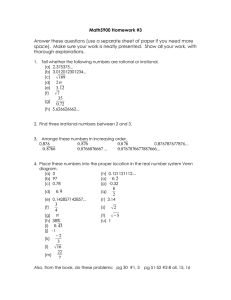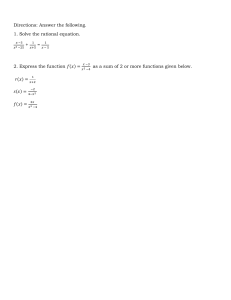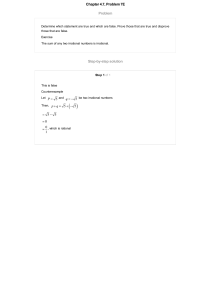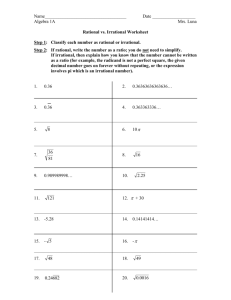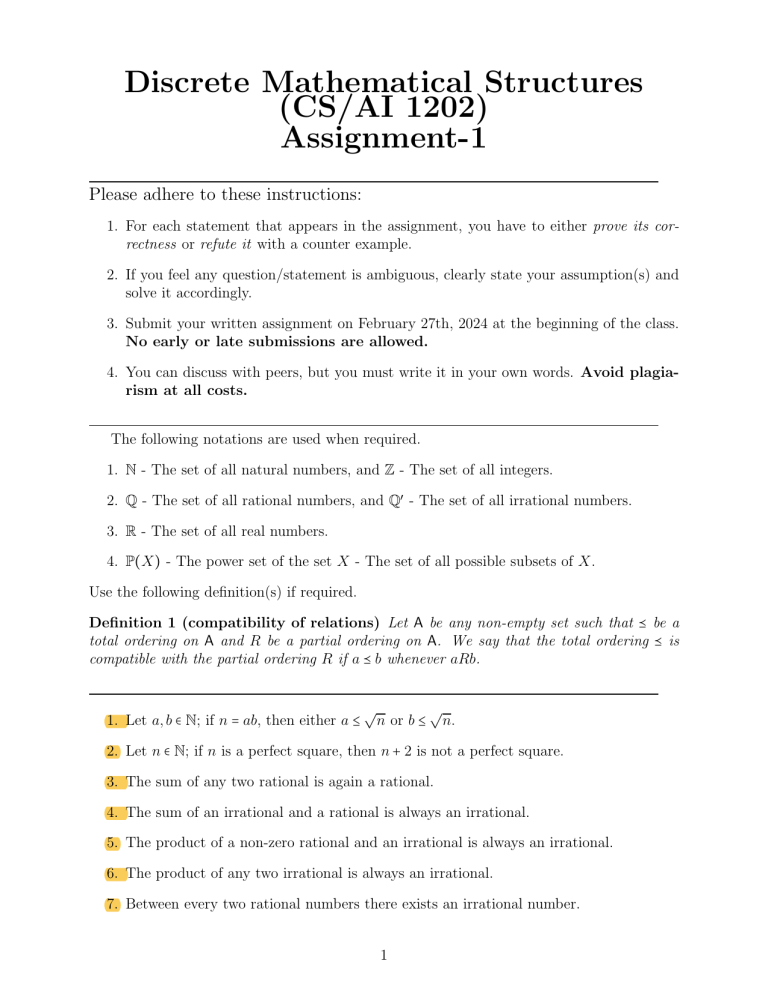
Discrete Mathematical Structures
(CS/AI 1202)
Assignment-1
Please adhere to these instructions:
1. For each statement that appears in the assignment, you have to either prove its correctness or refute it with a counter example.
2. If you feel any question/statement is ambiguous, clearly state your assumption(s) and
solve it accordingly.
3. Submit your written assignment on February 27th, 2024 at the beginning of the class.
No early or late submissions are allowed.
4. You can discuss with peers, but you must write it in your own words. Avoid plagiarism at all costs.
The following notations are used when required.
1. N - The set of all natural numbers, and Z - The set of all integers.
2. Q - The set of all rational numbers, and Q′ - The set of all irrational numbers.
3. R - The set of all real numbers.
4. P(X) - The power set of the set X - The set of all possible subsets of X.
Use the following definition(s) if required.
Definition 1 (compatibility of relations) Let A be any non-empty set such that ⪯ be a
total ordering on A and R be a partial ordering on A. We say that the total ordering ⪯ is
compatible with the partial ordering R if a ⪯ b whenever aRb.
1. Let a, b ∈ N; if n = ab, then either a ≤
√
√
n or b ≤ n.
2. Let n ∈ N; if n is a perfect square, then n + 2 is not a perfect square.
3. The sum of any two rational is again a rational.
4. The sum of an irrational and a rational is always an irrational.
5. The product of a non-zero rational and an irrational is always an irrational.
6. The product of any two irrational is always an irrational.
7. Between every two rational numbers there exists an irrational number.
1
8. There exists a pair of consecutive integers such that one of these integers is a perfect
square and the other is a perfect cube.
9. If a, b ∈ Q, then ab ∈ Q.
10. For any three sets A,B and C, if A is not a subset of B ∪ C then A ∖ B cannot be a
subset of C.
11. (a) Consider the following relations:
i. Let R1 be a relation on R defined as a R b if f a − b ∈ Q.
ii. Let R2 be a relation on A = {1, 3, 5, 30, 45, 60} defined as a R b if f a ∣ b (i.e.,
a divides b).
iii. Let R3 be a relation on P(X) defined as A R B if f A ⊆ B, where X =
{a, b, c, d}.
(b) For each of the above relations check if it is:
i. Reflexive, Symmetric, Antisymmetric, and/or Transitive.
ii. a P oset, if so then specify (whenever they exist) maximal, minimal, greatest
and least elements.
iii. a T oset.
iv. a Lattice.
v. Draw an Hasse diagram whenever possible, and find a compatible total ordering.
12. Every finite P oset contains a minimal element.
13. Every finite P oset contains the greatest element.
14. Show that the relation R on NXN defined as (a, b) R (c, d) if f a + d = b + c is an
equivalence relation. Describe equivalence classes clearly.
15. Let B be the set of all binary strings, and R be a relation on B defined as x R y if f x
and y have the same number of 1s. Then, check if R is an equivalence relation; if so,
describe equivalence classes clearly (if possible).
16. If a relation R on a non empty set A is both symmetric and transitive, then R must
be an equivalence relation.
17. Define partition of a set.
18. Show that every equivalence relation on a set X produces a partition of X, and viceversa.
19. The set of all rationals is countable.
20. The set of all reals is uncountable.
2

